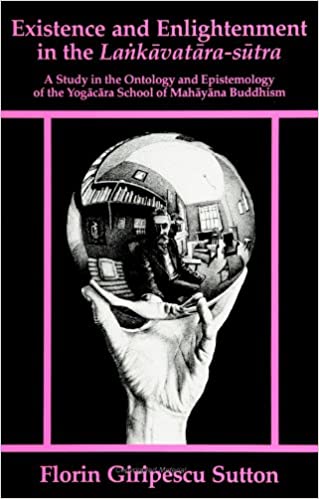|
|
| Line 2: |
Line 2: |
| |FullTextRead=No | | |FullTextRead=No |
| |BookToc=*{{i|Foreword|xiii}} | | |BookToc=*{{i|Foreword|xiii}} |
| | |
| *{{i|Preface|xv}}<br><br> | | *{{i|Preface|xv}}<br><br> |
| | |
| <center>'''Introduction'''</center> | | <center>'''Introduction'''</center> |
| | |
| *{{i|0.1. The Purpose of the Study, and the Significance of the<br> ''Laṅkāvatāra-sūtra'' within Buddhist Doctrinal History|1}} | | *{{i|0.1. The Purpose of the Study, and the Significance of the<br> ''Laṅkāvatāra-sūtra'' within Buddhist Doctrinal History|1}} |
| | |
| *{{i|0.2. Dating the Text: Problems of Form and Interpretation|13}} | | *{{i|0.2. Dating the Text: Problems of Form and Interpretation|13}} |
| | |
| *{{i|0.3. Methodology and Outline of the Study|23}}<br><br> | | *{{i|0.3. Methodology and Outline of the Study|23}}<br><br> |
| | |
| <center>'''Part One: Concepts of Being'''</center> | | <center>'''Part One: Concepts of Being'''</center> |
| | |
| *{{i|1.0. The Nature of Buddhist Ontology|39}} | | *{{i|1.0. The Nature of Buddhist Ontology|39}} |
| * General considerations * The practical aim of the Yogācāra Philosophy | | * General considerations * The practical aim of the Yogācāra Philosophy |
| | |
| *{{i|1.1. The Threefold Meaning of Tathāgata-garbha and its<br> Relation to Ālaya-vijñāna: the ''Essence'' of Being|51}} | | *{{i|1.1. The Threefold Meaning of Tathāgata-garbha and its<br> Relation to Ālaya-vijñāna: the ''Essence'' of Being|51}} |
| * Preliminary considerations * Tathagāta-garbha as essential, supramundane,<br> pure dharma, and its contrast with the Hindu Ātman * Tathagata-garbha<br> as embryo, and the dynamics of Buddhahood * Tathāgata-garbha<br> as womb or matrix of Buddhahood * Conclusion | | * Preliminary considerations * Tathagāta-garbha as essential, supramundane,<br> pure dharma, and its contrast with the Hindu Ātman * Tathagata-garbha<br> as embryo, and the dynamics of Buddhahood * Tathāgata-garbha<br> as womb or matrix of Buddhahood * Conclusion |
| | |
| *{{i|1.2. The Five Skandhas: the ''Temporal'' Manifestation of Being|79}}<br> Introduction * Brief overview of the Ātman controversy prior to the<br> ''Laṅkāvatāra-sūtra'' * Rūpa, or the formative elements of the five Skandhas<br> * Nāma, or the formless elements of the five Skandhas * The Skandhas and<br> the empirical self, or personality * The Skandhas and the trans-empirical<br> Self, the Tathāgata * The five Skandhas and the denial of metaphysical<br> dualities * Concluding remarks on the notion of Self and its varieties<br> | | *{{i|1.2. The Five Skandhas: the ''Temporal'' Manifestation of Being|79}}<br> Introduction * Brief overview of the Ātman controversy prior to the<br> ''Laṅkāvatāra-sūtra'' * Rūpa, or the formative elements of the five Skandhas<br> * Nāma, or the formless elements of the five Skandhas * The Skandhas and<br> the empirical self, or personality * The Skandhas and the trans-empirical<br> Self, the Tathāgata * The five Skandhas and the denial of metaphysical<br> dualities * Concluding remarks on the notion of Self and its varieties<br> |
| | |
| *{{i|1.3. Dharmadhātu: the ''Spatial'' or Cosmic Dimension of Being|117}}<br> Introductory remarks * Dharmādhatu as cosmic Law: the fundamental<br> structure of the universe * Dharmādhatu as universal Void: the ground<br> of Being * Concluding observations<br><br> | | *{{i|1.3. Dharmadhātu: the ''Spatial'' or Cosmic Dimension of Being|117}}<br> Introductory remarks * Dharmādhatu as cosmic Law: the fundamental<br> structure of the universe * Dharmādhatu as universal Void: the ground<br> of Being * Concluding observations<br><br> |
|
| |
|


